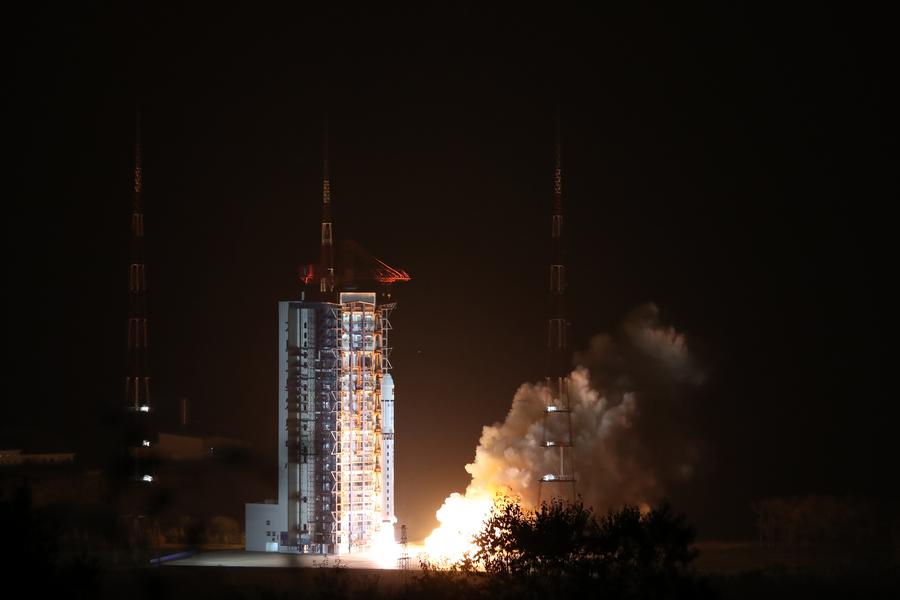
A Long March-2D rocket carrying China's first solar exploration satellite blasts off from the Taiyuan Satellite Launch Center in north China's Shanxi Province, Oct. 14, 2021. (Photo by Zheng Bin/Xinhua)
NANJING, Feb. 5 (Xinhua) -- Using spectral imaging data of China's first solar exploration satellite, Xihe, a group of Chinese physicists constructed three-dimensional velocity diagrams of two kinds of plasmas in the sun's atmosphere.
The dark bands suspended in the corona are much colder and more dense than the surrounding matter, thus showing long dark bars against a bright background. When appearing in the edge of the sun's surface, they presented bright structures called prominence.
Xihe, a space telescope operating in a sun-synchronous orbit, is conducting the space exploration of solar Hα spectral imaging of the all-sun plane. It can scan the full heliosphere within 46 seconds, obtaining spectral information at any point on the sun and enabling the mapping of dark band dynamics.
Using Xihe's observations, the researchers from Nanjing University demonstrated the expansion, ejection, fallback, rotation and splitting of a dark bar and a solar prominence, according to a news release on Monday by the China National Space Administration.
The erupting dark bars, if spread towards the Earth, may trigger geomagnetic storms, causing serious damage to the equipment in the near-Earth space.
The accurate measurement of the three-dimensional velocity fields of those plasmas is of great significance for early warning and forecasting of catastrophic space weather, said the researchers.